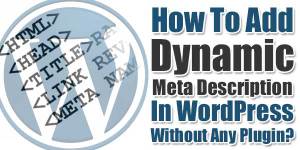
Search engine optimization affects your website in many different ways. Since it directly affects your website’s search rating, it is always a good idea to do SEO audits and improve the elements that matter. The topic of today’s post talks about optimizing content and avoiding common mistakes that go with it. The goal is to find a balance between optimized and quality content and satisfy SEO requirements and your faithful customers.
Table of Contents
Writing For SEO:
An average reader looks at content as reading material. For them, it is a piece of quality content that provides information. The level of enjoyment depends on the creativity of the writer. However, besides the obvious content the reader sees, there is more to it than meets the eye. Besides having a creative mind and a writing talent, a content creator must also understand the rules of SEO and how to write content for SEO. For example, you can be the most talented writer in the world, but if you don’t optimize your piece to include the elements of SEO, no one will ever find your content. Writing for SEO means:
- including important keywords and variations of keywords;
- properly distributing keywords;
- using relevant images and image attributes;
- populating meta descriptions;
- being mindful of passive speech in your text;
- including transition words;
- paying attention to word complexity based on your readers;
- including subheadings;
- adding internal and external links to relevant content;
- optimizing article length and paragraph length;
All of these elements are important not only for SEO but also for content marketing. Because there are so many things that require the attention of a writer, they often make SEO mistakes and overoptimize or underoptimize content.

What Does It Mean To Overoptimize Or Under-Optimize Content?
To create quality content, you need to pay attention to several things. First, the content must be well-written, interesting, engaging, and valuable to the readers. Second, you need to make the content visually appealing. For example, reading a wall of text with 3000 words and nothing else will be boring. It will be easier to digest if you break it with a couple of images. Third, you must write the content in a natural way, and you should never force it.
However, when we optimize content, we may often make mistakes that will disturb the natural flow of the words. That usually happens during optimizing content for SEO. Each element we mentioned in the previous section has its own rules. If you break those rules, you will either overoptimize your content or underoptimize it. Simply put, underoptimizing content means you did not use enough SEO elements. Overoptimizing means you used too much.
Important Keywords And Their Variations:
Every content should have the main keyword and a few variations that repeat throughout the article. Do not think that using more different keywords will target more audience groups. The engine will not be able to decide what keyword is the most important, and it will not properly index your article.
Keyword Distribution:
The number of keywords usually depends on the length of the article. On average, an article with 1000 words should have the main keyword repeated between 4 and 6 times, evenly spread across the piece. Furthermore, the main keyword should be present in the title, at least one subheading, the first and the last paragraph, and as a part of an image attribute.
If the article is shorter than 1000 words, you must be mindful of using too many keywords. If you try to add keywords in all places where they should usually be, you might overoptimize the content because it is too short for that many keywords.
The users will notice that the phrase you are using repeats often, affecting the article’s natural flow. Furthermore, Google does not approve keyword stuffing, which will affect your search rating. Additionally, do not try to fix underperforming content by using more keywords. That strategy will not give you more traffic.
Using Too Many Images:
When a reader reads an article, they want to be able to focus on the words. However, the attention span and the reading focus differ for everyone. Someone can read more without a break, and someone cannot.
It would be best to break the article by adding a few images. However, too many images will shift the focus from the content to the visuals. Furthermore, imagine if a user is reading the article on a mobile phone. If they have to constantly scroll past images to find a few lines of text, they might also lose interest. On average, you should use about 4 images per 1000 words, although that depends on your website’s style.
Adding Too Many Links:
Links are very useful for SEO. They connect your website’s pages and link them with other relevant websites. However, that does not mean you should add a bunch of links to your article. Remember, the content is the start. If you add too many links, you push the user to click on the link to go to a different page. This is shifting focus from the content.
The primary purpose of links is to add more value to the user by offering additional content that relates to whatever the article is talking about. You should strategically distribute links to engage users at the right moment. This is especially important if you are building a new site and want to implement SEO correctly. Also, adding too many links is considered a red flag by Google standards. It means you are trying to force optimization and create content just for the sake of optimization without user interest in mind.
Find A Balance Between Optimized And Quality Content And Satisfy Both Google Requirements And Your Users:
Now you understand what it means to find a balance between optimized and quality content. Follow these rules, and always prioritize user interest and the natural flow of the content. If you need to sacrifice something, it is often better to underoptimize your content but maintain the natural flow of words.

 About the Author:
About the Author:
















Be the first to write a comment.